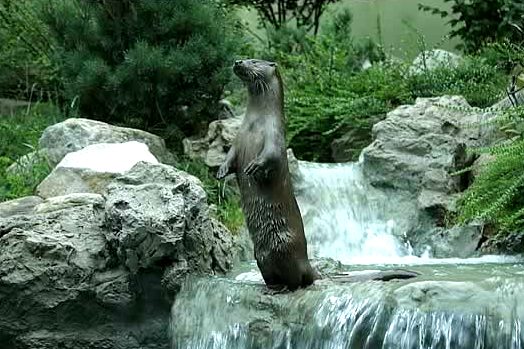| 새로운 사진 | 신문속의 동물소식 | 신기한 동물이야기 | 동물의 소리 | 동물동화상 | 사진 올리기 | 사진 저작권 | English |
|---|
| 재미있는 동물사진 | 괴수/괴어/엽기 동물사진 | 동물이름사전 | 동물목록 | 바깥고리 | 창고입구 | 똑똑누리집 |
|---|
| 이미지 정보 | Original File Name: Loutre_des_pyrenees_ossau_2002-European or Eurasian river otter, Lutra lutra.jpg Resolution: 524x349 File Size: 60092 Bytes Upload Time: 2008:02:22 15:04:05 | |
| 올린이 | 이름 (메일주소): Unknown | |
| 사진 제목 | Eurasian River Otter (Lutra lutra) - Wiki | |
 |
| Email : 카드 | 올린이 | 운영자 사진삭제 정보수정 Admin |
| 설명 | Eurasian River Otter (Lutra lutra) - Wiki
Eurasian otter
The Eurasian otter, Lutra lutra, also known as the Eurasian river otter, common otter, Old World otter and European otter, is a European and Asian member of the Lutrinae or otter subfamily, and is typical of freshwater otters. For the remaining of this article "otter" refers exclusively to the Eurasian otter. Range and habitat The Eurasian otter is the most widely distributed otter species, its range including parts of Asia and Africa as well as being spread across Europe. The otter is believed to be currently extinct in Liechtenstein, the Netherlands, and Switzerland. Otters are now very common along the coast of Norway and in Northern Britain, especially Shetland where 12% of the UK breeding population exist. In Italy, they can be found in the Calore river area. The otter's diet mainly consists of fish but can also include birds, insects, frogs, crustaceans and sometimes small mammals. In general this opportunism means they may inhabit any unpolluted body of freshwater, including lakes, streams, rivers, and ponds, as long as there is good supply of food. Otters may also live along the coast, in salt water, but require regular access to freshwater to clean their fur. When living in the sea individuals of this species are sometimes referred to as "sea otters", but they should not be confused with the true sea otter, a North American species much more strongly adapted to a marine existence. Behaviour and reproduction Otters are strongly territorial, living alone for the most part. An individual's territory may vary between about one and forty kilometres long (about half to 25 miles), with about 18 km (about 11 miles) being usual. The length of the territory depends on the density of food available and the width of the water suitable for hunting (it is shorter on coasts, where the available width is much wider, and longer on narrower rivers). The territories are only held against members of the same sex, and so those of males and females may overlap. Males and females will breed at any time of the year, and mating takes place in water. After a gestation period of about 63 days, one to four cubs are born, which remain dependent on the mother for a year. The male plays no direct role in parental care, although the territory of a female with her cubs is usually entirely within that of the male. Hunting mainly takes place at night, while the day is usually spent in the otter's holt (den) – usually a burrow or hollow tree on the riverbank which can sometimes only be entered from under water. Conservation The Eurasian otter declined across its range in the second half of the 20th Century primarily due to pollution from pesticides such as organochlorine pesticides (OCs) and polychlorinated biphenyls (PCBs). Other threats included habitat loss and hunting, both legal and illegal Otter populations are now recovering in many parts of Europe for example in Britain the number of sites with an otter presence increased by 55% between 1994 and 2002. Recovery is partly due to a ban on the most harmful pesticides that has been in place across Europe since 1979, partly to improvements in water quality leading to increases in prey populations, and partly to direct legal protection under the European Union Habitats Directive. and national legislation in several European countries. In Hong Kong, it is on a protected species under Wild Animals Protection Ordinance Cap 170. They are listed as Near Threatened by the 2001 IUCN Red List. Eurasian otters in popular culture The novel Tarka the Otter, and the film based on it features Eurasian otters. The Redwall series of books by Brian Jacques also regularly features anthropomorphic otters among its characters, even naming one of the books The Pearls of Lutra. http://en.wikipedia.org/wiki/Eurasian_otter
| |||
| 저작권 정보 | 사진의 저작권은 원저작자에게 있습니다. 동물그림창고는 동물관련 사진을 전시할 수 있는 공간만을 제공합니다.사진을 사용하고자 할 경우에는 저작권자와 협의하시기 바랍니다. |
|
|
|
| |||||||
| CopyLeft © since 1995, 동물그림창고. All rights may be reserved. | ||||||||
Stats